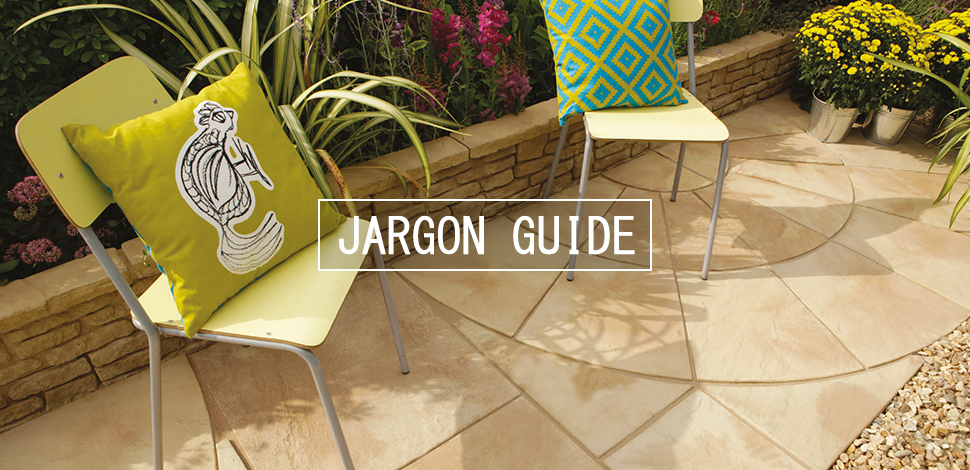
Riven? Calibrated? Rumbled?
There so many styles of paving to choose from, that some of the jargon can make it a bit confusing to figure out exactly what you’re looking at! So we’ve come up with a comprehensive guide to help you understand exactly what you need to look out for.
Jargon Guide
Project Pack
Unless you’re looking at block paving, most paving products will include a number of different sized slab. These are designed to be placed side by side to create a natural, neat effect. A project pack has the correct number of slabs to cover the advertised area, and includes a varied number of these different sized slabs. This is designed to make it easier for you to select what you need, as it’s very easy to end up too many small slabs and not enough large ones! Most of our products come complete with a laying guide on the website, so you can see how the manufacturer thinks how the different sized slabs should be laid. If you don’t like this design that’s not a problem. You can pop into one of our branches in the Midlands for a custom quote.
Manufactured Paving
Manufactured paving is paving that is not made from natural stone. Instead the paving slabs are made from concrete and are moulded to an exact specification. There is a big advantage to choosing manufactured paving as it means that you can choose a smooth finish, with all the paving slabs being the same depth and size. This also means that you get a much bigger variety in styles plus, this type of paving is usually cheaper that the natural alternative.
Natural Paving
As you may have guessed from the title, natural paving is made from natural stone. Natural stone can look absolutely beautiful, but it’s important to note that you will not get the same amount of uniformity in the slabs as you would from manufactured paving. If you want you’re patio to be completely smooth and flat, natural paving is not the right choice. However, if you’re after paving with some character and texture, natural paving would be a great choice.
Riven Paving
Riven paving is when the paving has a textured, rustic look. Individual natural riven paving often comes in varying thicknesses which requires careful laying to ensure correct alignment of the paving, and may need extra bedding or underlay depending on the type of use e.g. patio or driveway. You can also purchase manufactured riven paving which mimics the look of textured natural stone.
Rumbled Paving
Rumbled is a style of paving that is very close to cobbles. They’re often small square or rectangular stones laid close together. They’re a great choice for driveways and paths.
Calibrated Paving
Calibrated paving means that all of the slabs will be of a uniform thickness. Calibrated paving is often more expensive than non-calibrated, but it is so much easier and quicker to lay that you often recoup these costs and more from your landscaper’s time.
Coping
A coping is a slab that you lay on top of a wall to give it a neat, finished look.
Kerb
Kerbs are generally used with block paving, and gives it that finished edge around the paved area.
Edging
Edging is mainly used with patios. There are many styles available, but most are often look like small walls between the paving and the garden/bedding plants.
Mulches
Mulches are generally used to improve the soil around plants, but also give your garden a neat, tidy appearance. Mulches can also help to retain moisture in the summer and prevent weeds from growing. Mulches are most commonly referred to as bark, but not all of them necessarily contain bark.
Read More Like This
1
